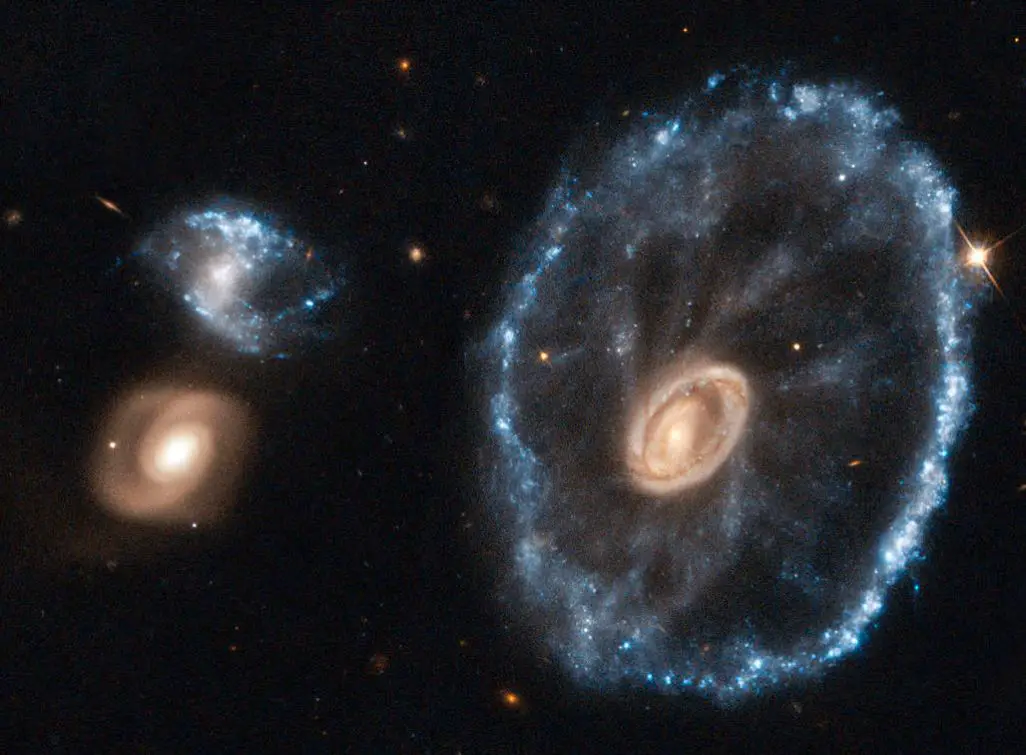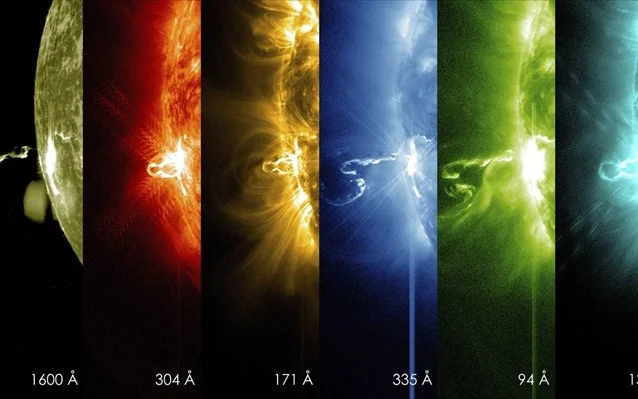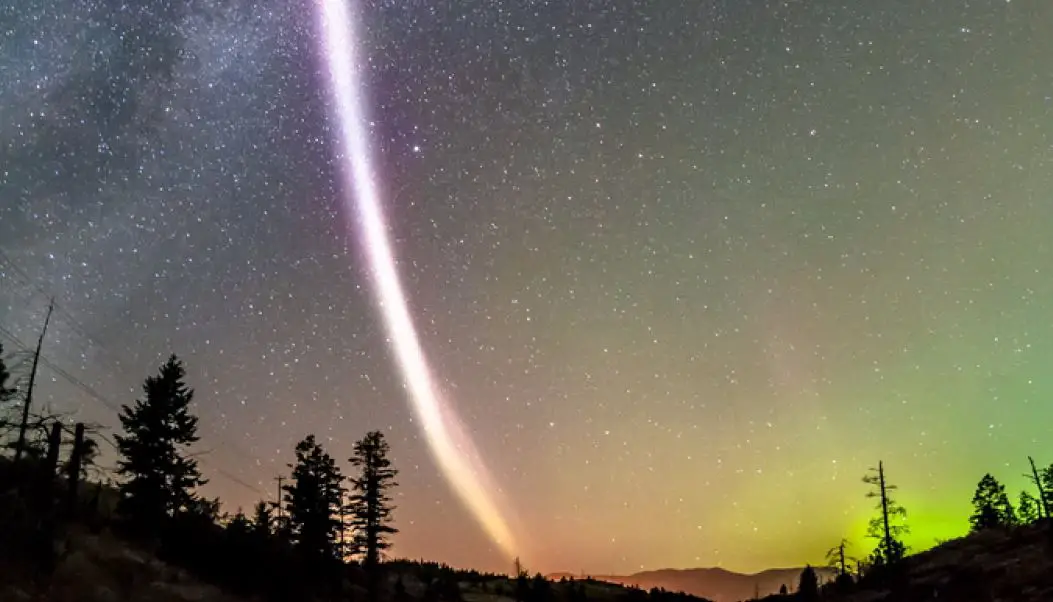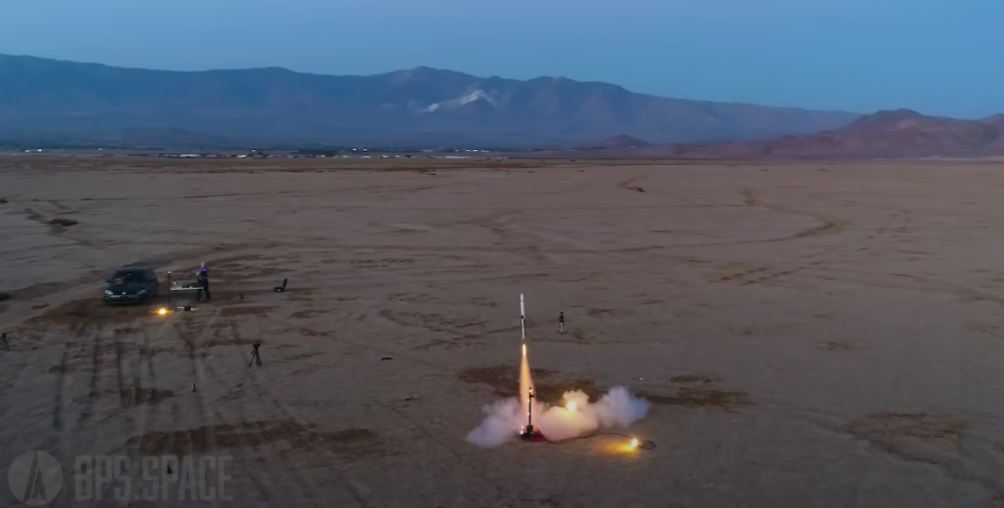The Webb Space Telescope is going all out to regularly send stunning new-generation images of the universe. Recently, a NASA team released a new photo of a dazzling object called the Wheel Galaxy 500 million light-years away, providing a new perspective on the Wheel Galaxy. How that has changed over the past billions of years.

Cartwheel Galaxy from James Webb Telescope – Image Source: NASA
Unlike the common spiral galaxies scattered in the universe, the “ring galaxies” formed by the high-speed collision of two galaxies are more rare. The collision can significantly affect the shape and structure of the galaxy. Cartwheel Galaxy (Cartwheel Galaxy) belongs to the latter.
It looks like a wagon wheel. It has been photographed by the Hubble Telescope in the past, but there is a lot of dust blocking the view. The Webb Telescope recently brought the latest and more powerful infrared images, giving us a better understanding of the wheel galaxy. Here is the image of the same galaxy from the Hubble Telescope:

Cartwheel Galaxy from Hubble Telescope – Image Credit: NASA
The Wheel Galaxy can be seen with 2 rings that expand outward from the collision center, like ripples after a stone is thrown at a pond; the galaxy core contains a lot of hot dust,
The brightest regions are home to huge young star clusters; on the other hand, the galaxy’s outer ring has continued to expand over the past 440 million years, hitting surrounding gas along the way to trigger star formation.
The new Wheel Galaxy data has revealed a lot of information on the age and dust of stars, and the Webb telescope has also discovered silicate dust that is common on Earth, giving scientists a better understanding of what happened in the galaxy in the past and insight into how it will evolve in the future.
You may also want to check image comparison of Webb Telescope and Hubble Telescope to see the difference.




